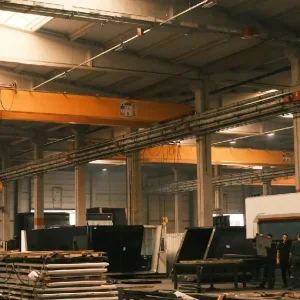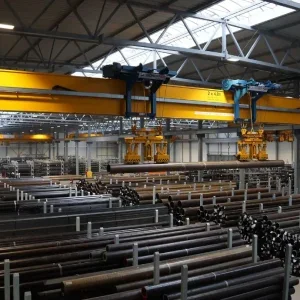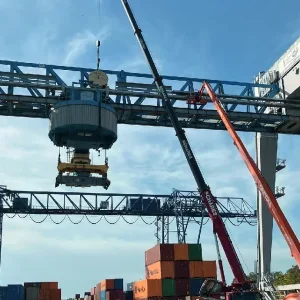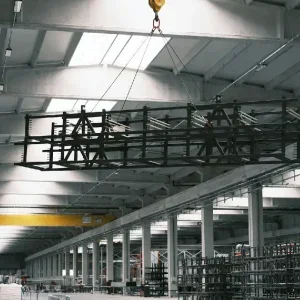DLM, based in Southampton, UK, is a specialist in the design, manufacture, repair, and calibration of load cells, load monitoring, and cable working equipment for the offshore, renewable energy, marine, subsea, and lifting and rigging industries.
It has supplied load pins for installation by Atlas in various capacity capstans, which work in tandem with hydraulic power units (HPUs). The “load pin winches” are typically purchased by Atlas’s clients for long-term use.
“Atlas is a valued customer that uses our load pins in their winches for this important end-use application, but we have collaborated on several projects over the years, and we also manufacture force measurement solutions for other projects in this fast-paced industry. We supply the load pins ready-machined; they just need to be installed in the winch mount point,” said Martin Halford, MD, DLM.
When constructed, the power generated by a turbine is transmitted to an offshore substation before then going to the mainland. This requires miles of subsea cabling, and the final stage of pulling cables into the foundation of each turbine or to the substation is completed by special winching equipment and, here, a state-of-the-art load monitoring system is provided via the load pins. The equipment has combined on various UK and European offshore wind farms.
According to Anton Lavery, MD, Atlas, the final section of each cable—approx. the last 200m—is pulled from a vessel into the base / foundation of a turbine or to the platform of an offshore substation. The electrical cable is high specification and high value, and it is therefore important to monitor the load applied during the pulling process.
“A spike in the load applied might indicate a problem and it is also important that the cable installers can demonstrate and prove that the cable has not been over-strained during installation. Cables have a maximum load that they can be exposed to and if this is exceeded the cable warranty will be invalidated,” he said.
Historically, Atlas has produced several 6t capacity capstan winches and HPUs, having originally provided them for a client called Cwind in 2014. Last year, it supplied a larger, 9t unit to a client before taking an order for a further eight of the same capacity. Atlas has since designed 11t and 12t capstans, which follow the same design concept, incorporating load pins. The winches and HPUs are produced by its manufacturing partner, Marotechniek, based in the Netherlands.
When Atlas places an order, the load pins are designed by DLM’s engineering team using in-house SolidWorks and other computer-aided design (CAD) modelling software, at which point the client can sign-off on technical drawings. The pins are then machined from stainless steel using a computer numerical control (CNC) lathe at DLM’s sister company, Vulcan Offshore. Once a load pin returns to DLM, it is ready for the strain gauging process, which is a “very intricate and delicate process,” explains Halford.
Next, DLM builds the TW-3.0 transmitter electronics into the orange telemetry end cap, designed by in-house engineers, and wires it up to the strain gauges. The load pin is then proof loaded, calibrated, and tested prior to goods outward inspection and finally dispatch.
“Each [load pin] is generally different to the next as they are typically custom-designed for the application. The common part is the telemetry end cap, which customers and end users are familiar with on several of our load pin / shackle load cells and running line monitoring products. Every one of our wireless products uses our own proprietary TW-3.0 electronics,” adds Halford.
Notably, load pins represent approx. 60% off all DLM load cell sales, and it can custom-design to any size. They can be paired with a TW-3.0-T display, which has the capability to integrate with data-logging / load test software on a PC, log directly onto a USB stick plugged into the base, or send out an analogue signal to a PLC system, depending on the model chosen. The handheld can communicate with up to 12 load cells simultaneously and one load cell can be connected to an unlimited number of displays.
“This makes them ideal for use in cable pull-in applications as you can have one local winch operator on the turbine monitoring the pull-in tension, and an operator on the vessel viewing the load and logging the load values on a laptop using [data-logging] software or by logging directly into the client’s survey suite. The client rep on board can also be provided with another handheld to provide confidence that throughout the duration of the pull-in, the cable is not damaged or overloaded,” says Halford.
In some set-ups, the winch is not installed with a load pin and instead a telemetry shackle load cell is used in a rigging arrangement over the top of the turbine platform above a snatch block to monitor the load. The TW-3.0-T display is unique in the fact that it has a maths function that allows for custom trigonometric equations to be added by the client to compensate for any angle variations over a sheave and output a line tension figure when measuring just the resultant load.






